




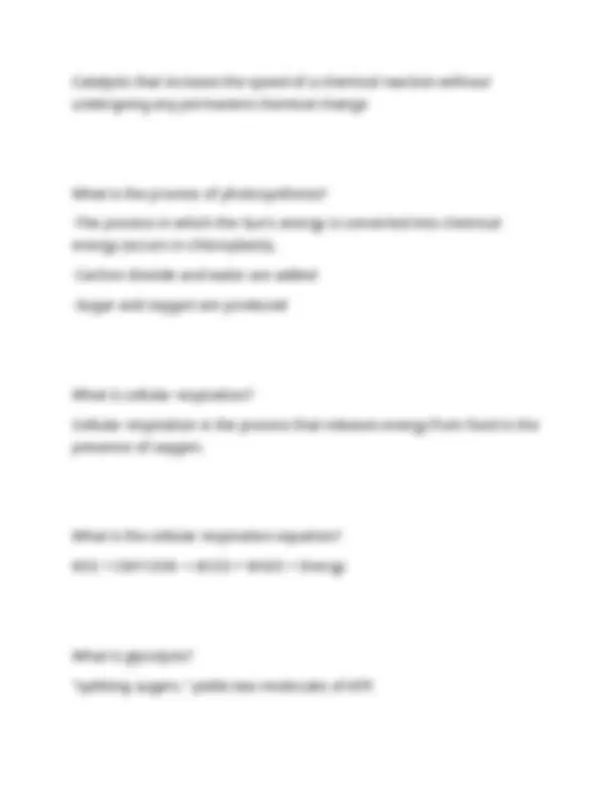
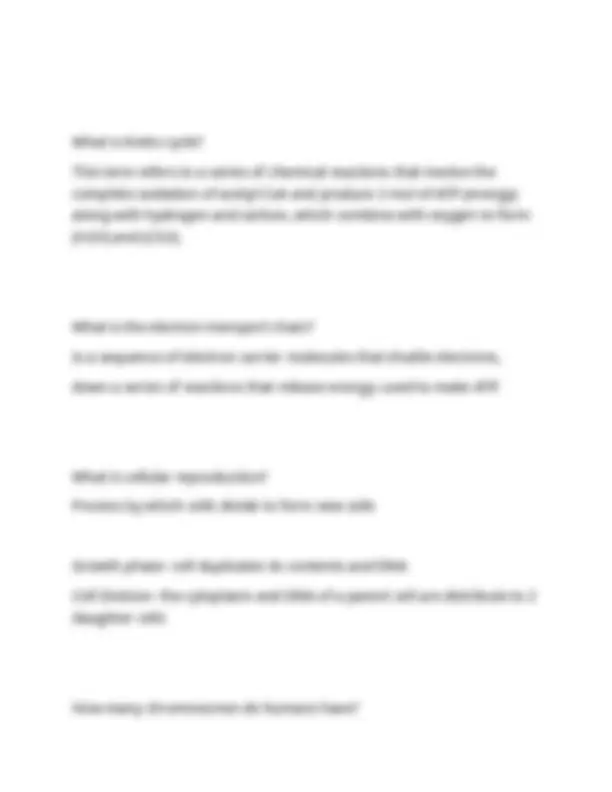
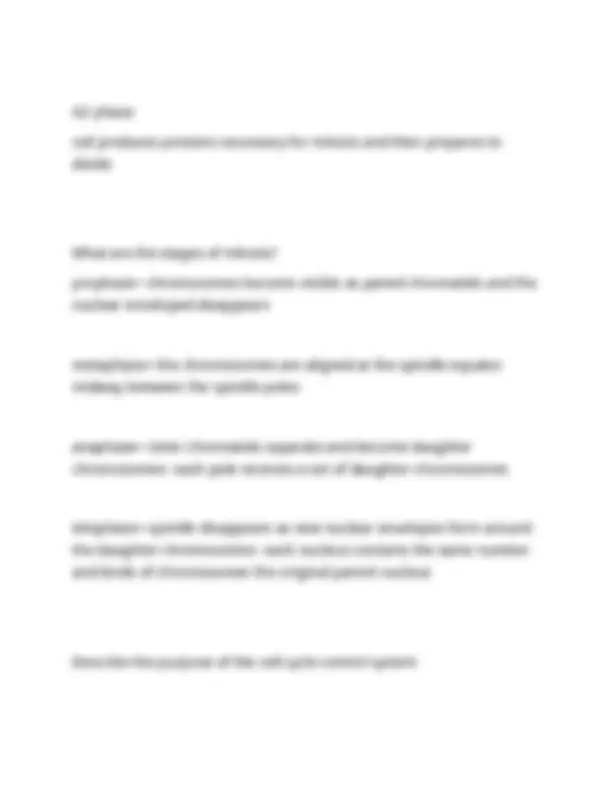
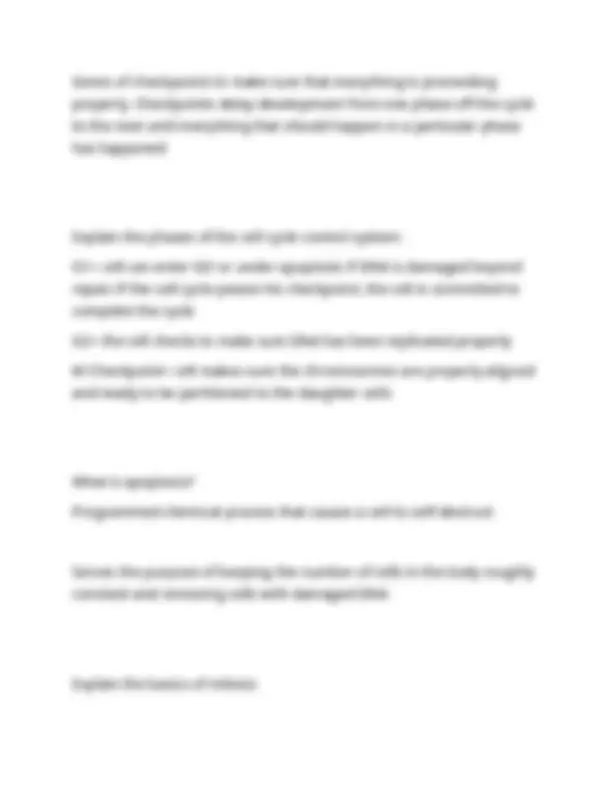

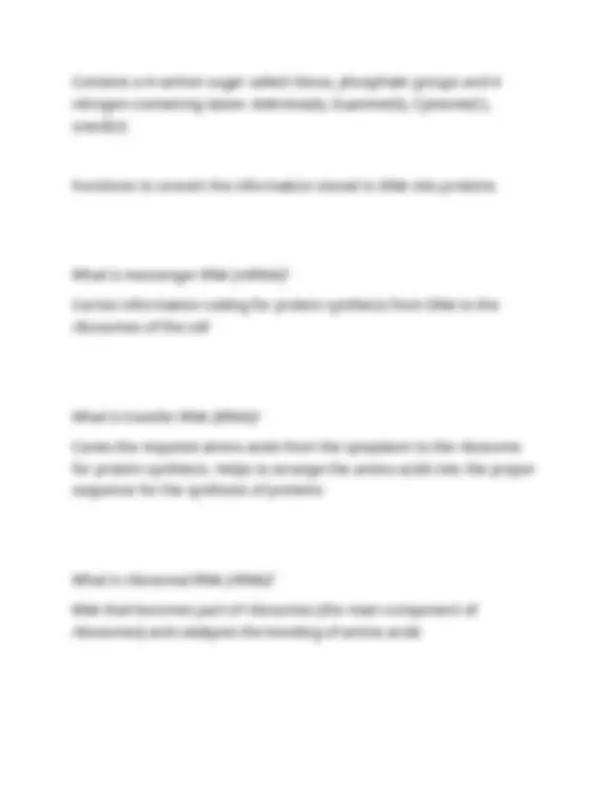
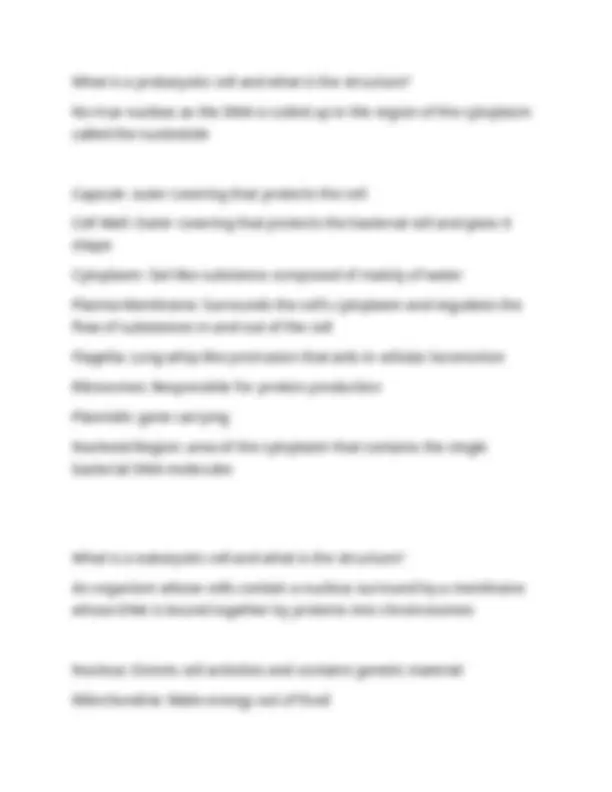
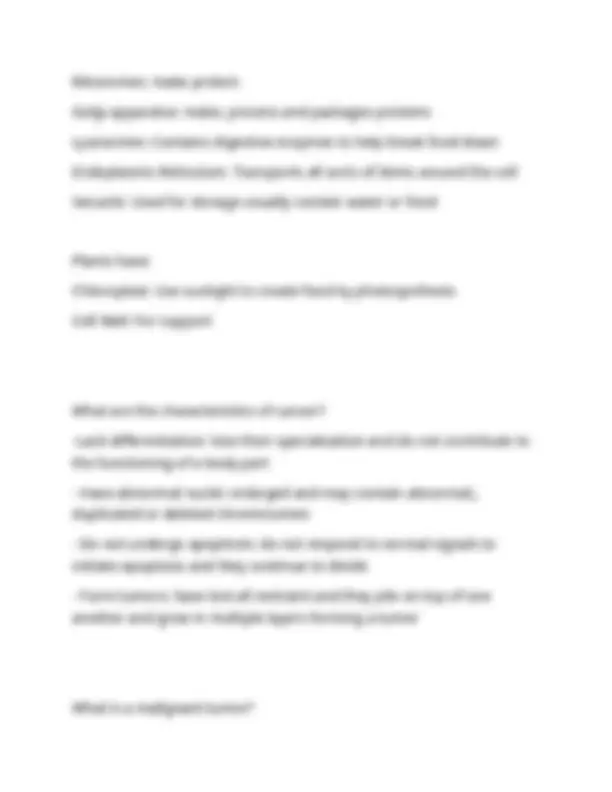






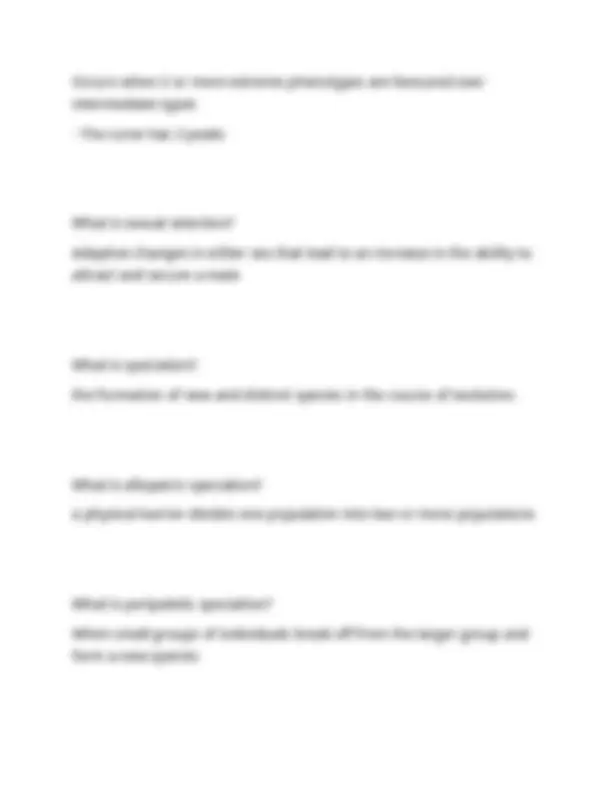




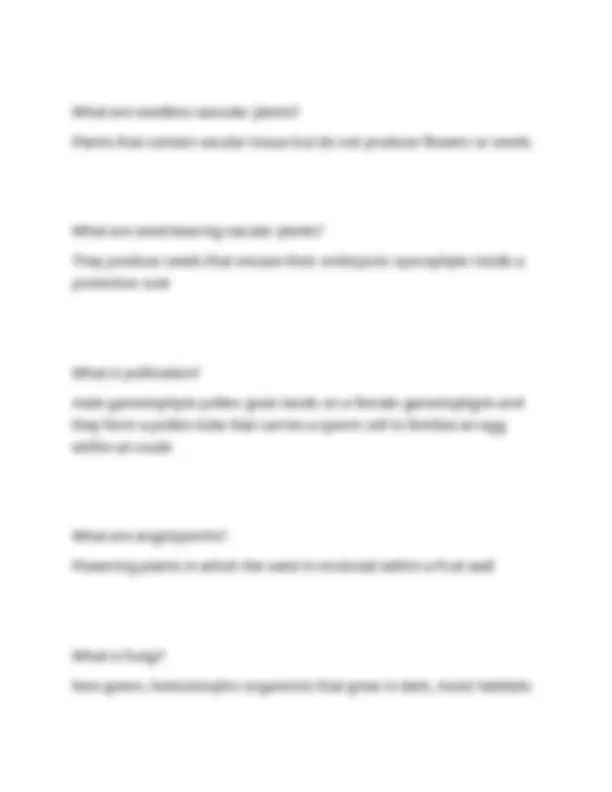
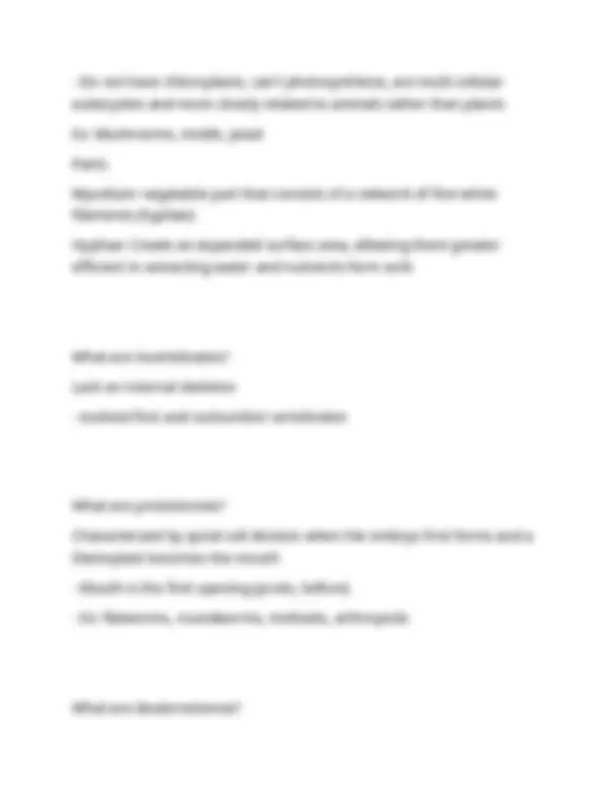

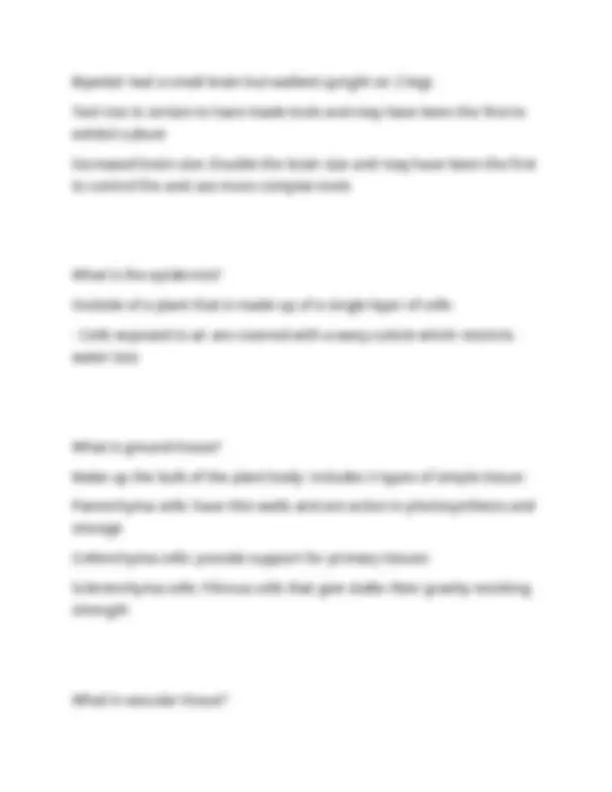
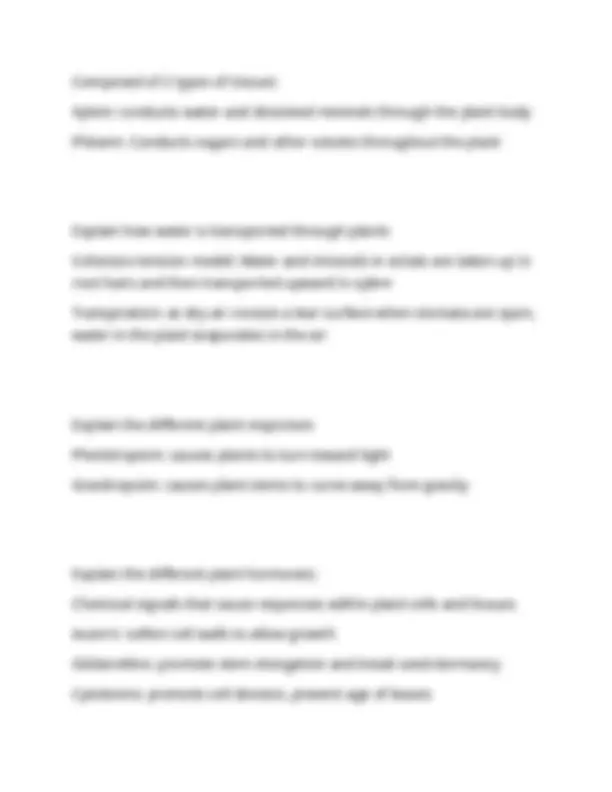


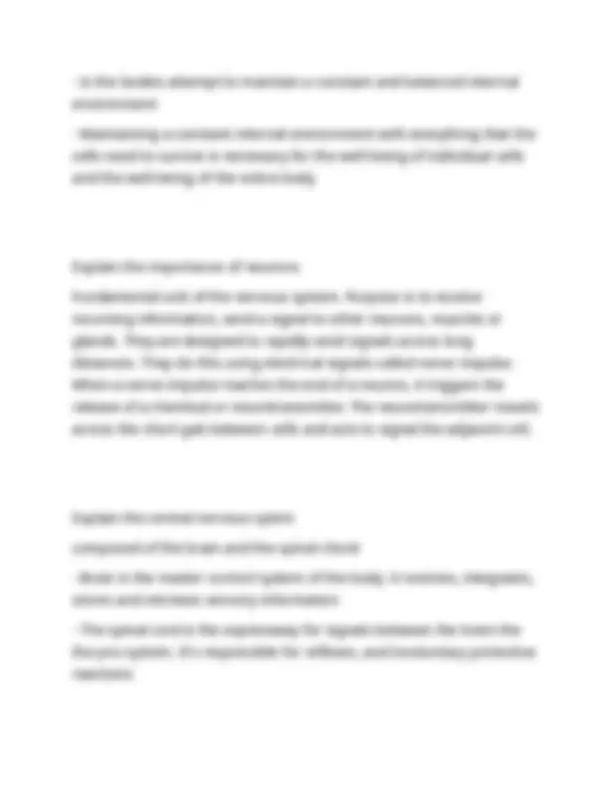
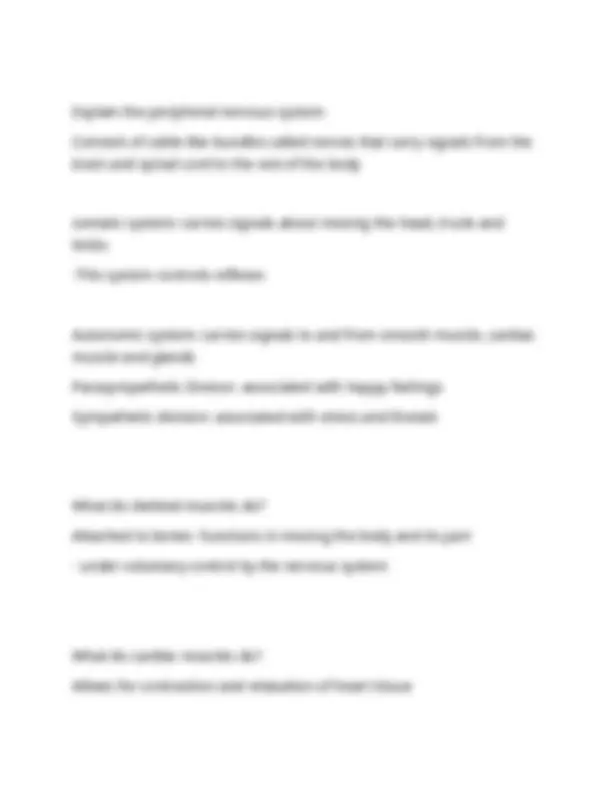

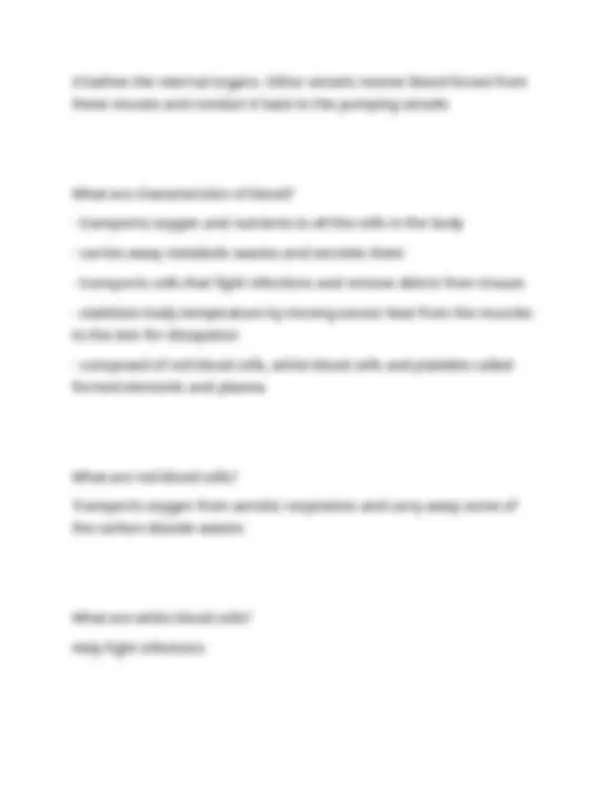
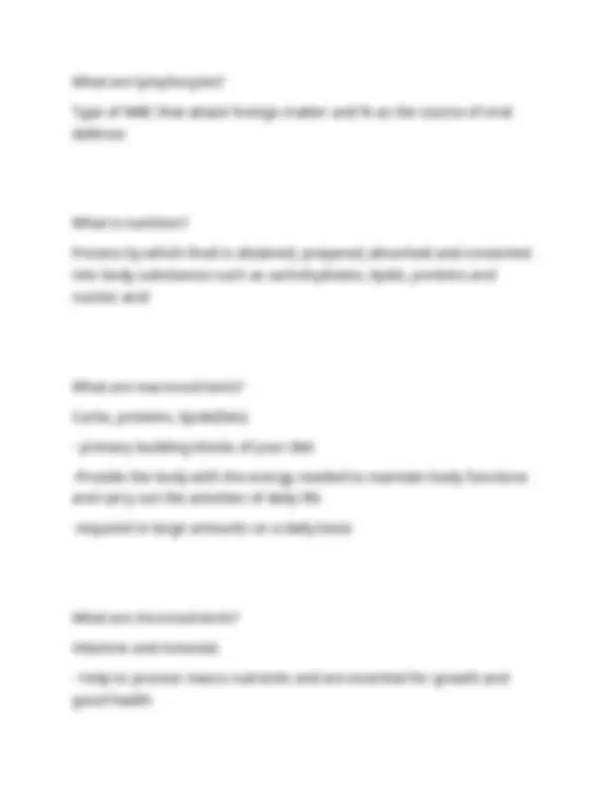

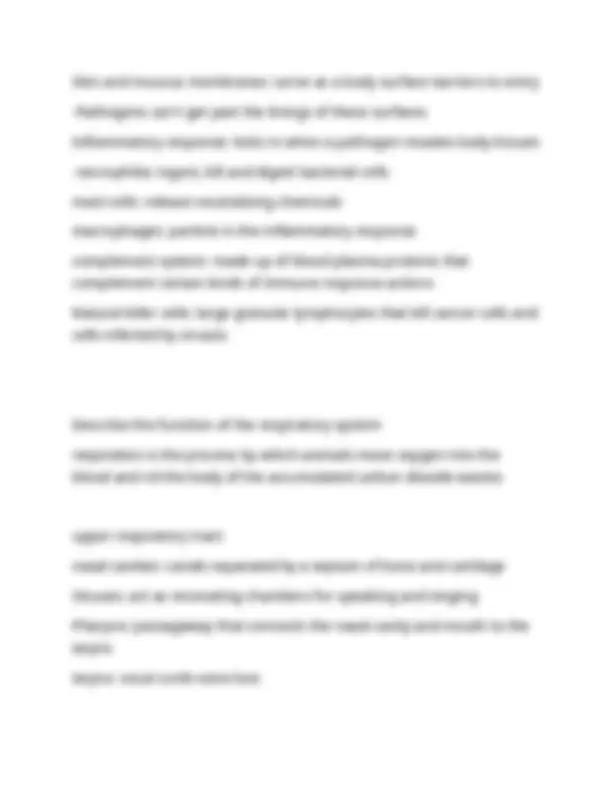

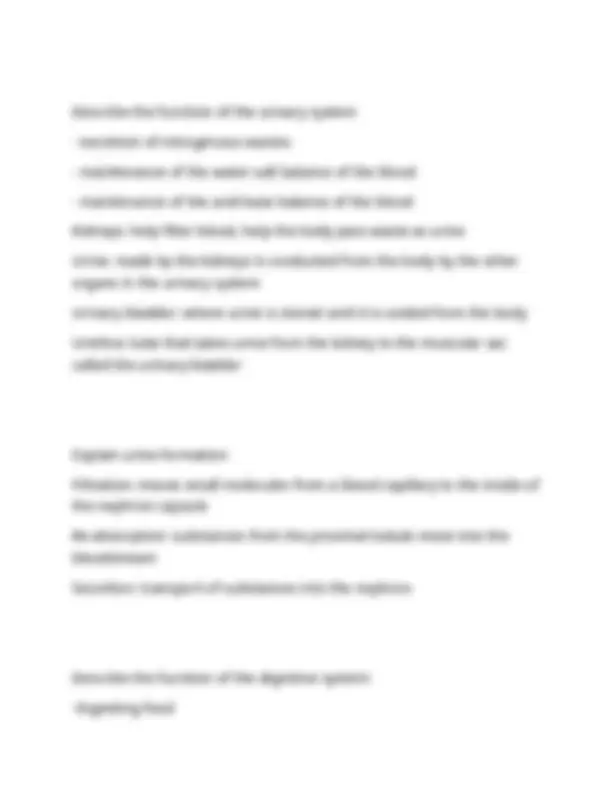






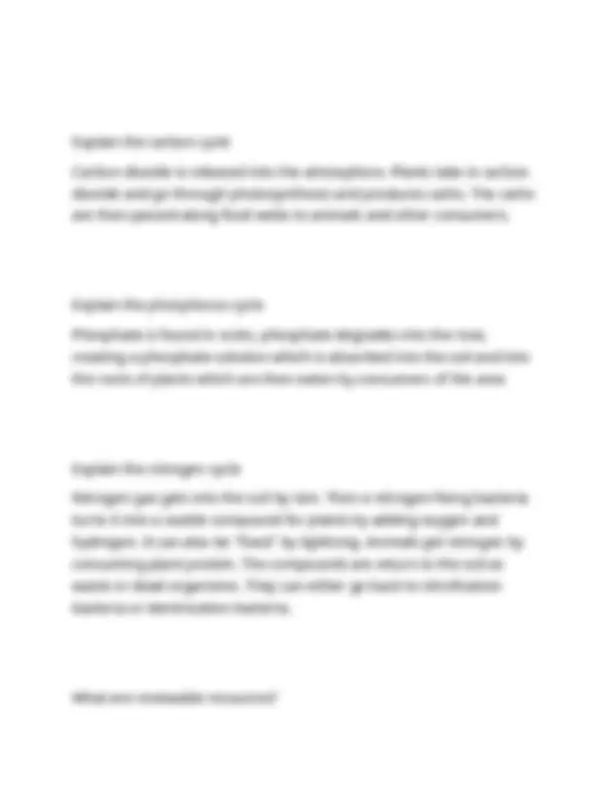
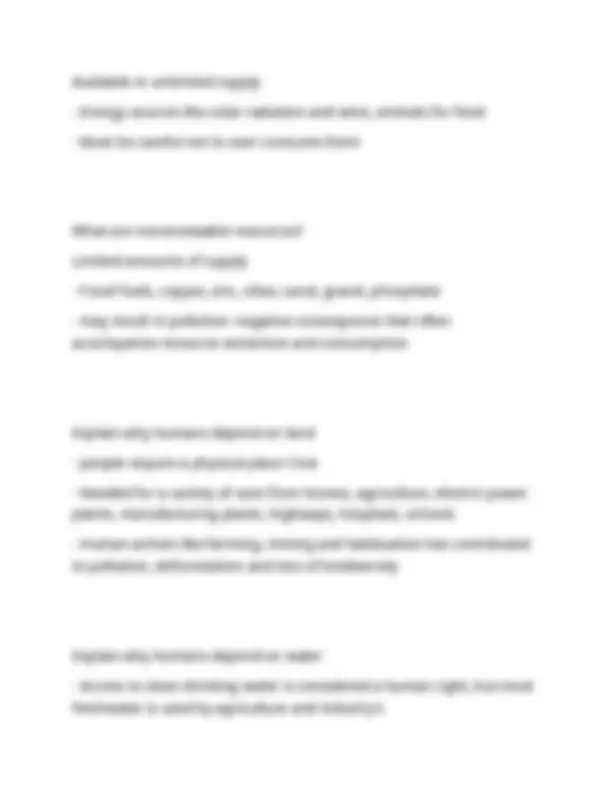
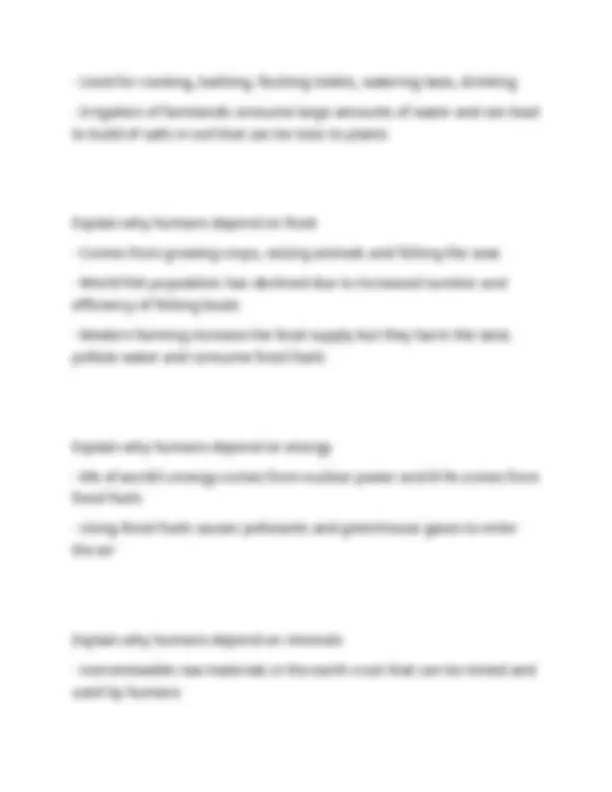



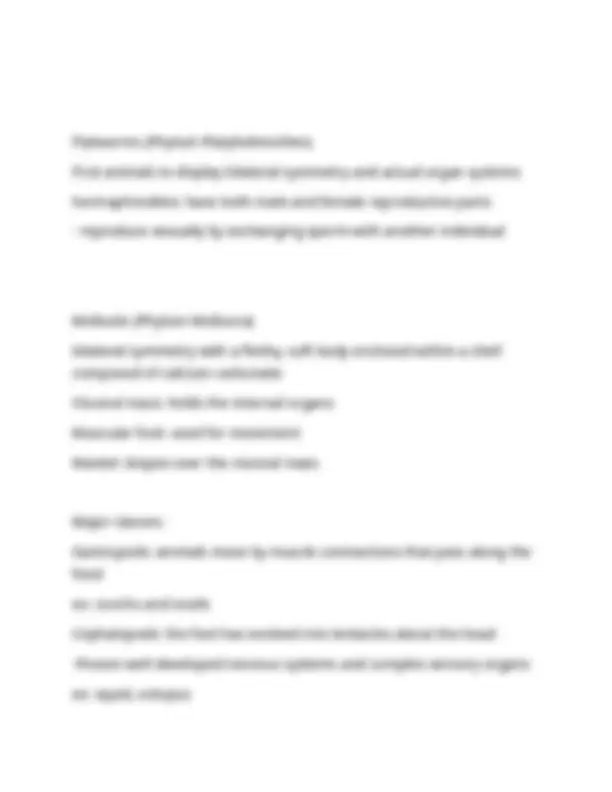

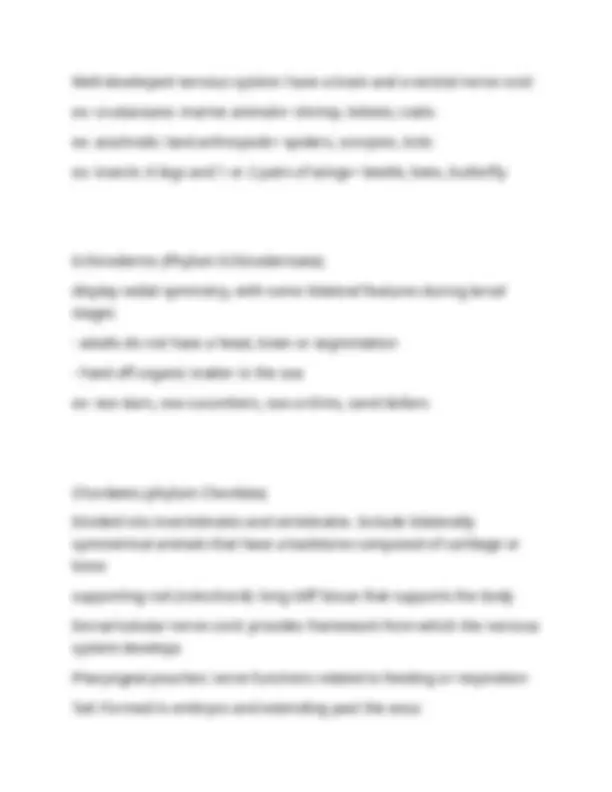
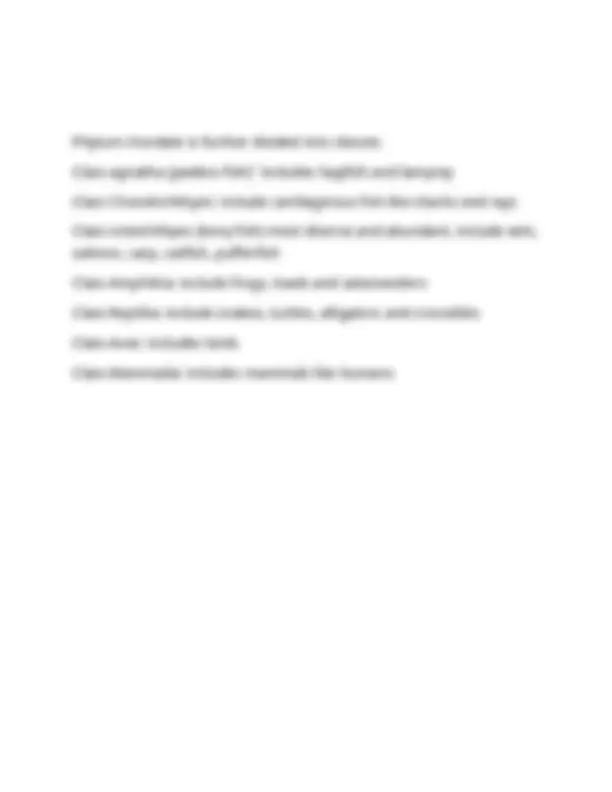


Study with the several resources on Docsity

Earn points by helping other students or get them with a premium plan


Prepare for your exams
Study with the several resources on Docsity

Earn points to download
Earn points by helping other students or get them with a premium plan
Community
Ask the community for help and clear up your study doubts
Discover the best universities in your country according to Docsity users
Free resources
Download our free guides on studying techniques, anxiety management strategies, and thesis advice from Docsity tutors
BIOLOGY PROCTORED EXAM PENN FOSTER REVIEW|2025-2026|QUESTIONS AND ANSWERS|A+RATED
Typology: Exams
1 / 63

This page cannot be seen from the preview
Don't miss anything!
























































Characteristics of living things -All are composed of cells -All obtain energy and use it to develop -Can sense changes in the environment and adjust in response to change -Exhibit modifications that represent adaptations to their environment Levels of Biological Organization atom, molecule, organelle, cell, tissue, organ, organ system, organism How are organisms classified? on the basis of their evolutionary/genetic relatedness
What is the scientific method? What is it's importance in biological sciences? Process used to validate observations while minimizing observer bias Its goal is for research to be conducted in a fair, unbiased and repeatable manner. The best way to discover how and why the world works What is matter? Anything that has mass and takes up space What is an atom? smallest unit of matter that retains all the chemical properties of an element. They combine to form molecules which then form into a solid, gas or liquid What is the structure of an atom? Nucleus in the center that contains protons (positively charged) and neutrons (no charge). The outermost region is called an electron shell that contain the electrons (negatively charged)
Carbohydrates, proteins, lipids, nucleic acid What are the properties of water? Its attraction to polar molecules. High-specific heat. High heat of vaporization. The lower density of ice. High polarity. Carbohydrates Broken down to glucose to provide energy. What are the different kinds of carbs? Glucose= monosaccharide that serves as blood sugar Sucrose= disaccharide which is table sugar Polysaccharides= include starch, which stores energy in plants Glycogen= stores energy in animals Cellulose= makes up the structure of plant cell walls
Protein macromolecule that contains carbon, hydrogen, oxygen, and nitrogen; needed by the body for growth and repair Lipid Energy-rich organic compounds, such as fats, oils, and waxes, that are made of carbon, hydrogen, and oxygen. Serve as a long-term energy source Nucleic acid macromolecule containing hydrogen, oxygen, nitrogen, carbon, and phosphorus Form DNA which acts to store genetic information What is the cell theory? All living organisms are made up of cells The cell is the smallest structural and functional unit of all living organisms All cells arise from pre-existing cells
Lysosome Digests food, bacteria and worn out organelles Vacuole Stores food, enzymes and other material Mitochondria Powerhouse of the cell- produces energy for growth, development and movement Nucleus A part of the cell containing DNA and RNA and responsible for growth and reproduction Cell wall A rigid structure that surrounds the cell membrane and provides support to the cell
Explain the process of diffusion: Molecules move from an area of higher concentration to an area of lower concentration until the concentration of molecules is the same at both sites Explain the process of osmosis: Water moves from areas of low solute concentration to areas of high solute concentration Describe a basic enzymatic reaction: S+E= P+E E represents the enzyme catalyzing the reaction S is the substance being changed P is the product of the reaction What is an enzyme?
What is Krebs cycle? This term refers to a series of chemical reactions that involve the complete oxidation of acetyl CoA and produce 2 mol of ATP (energy) along with hydrogen and carbon, which combine with oxygen to form (H2O) and (CO2). What is the electron transport chain? Is a sequence of electron carrier molecules that shuttle electrons, down a series of reactions that release energy; used to make ATP. What is cellular reproduction? Process by which cells divide to form new cells Growth phase- cell duplicates its contents and DNA Cell Division- the cytoplasm and DNA of a parent cell are distribute to 2 daughter cells How many chromosomes do humans have?
46 (23 pairs) What is nondisjunction and when does it occur? Nondisjunction occurs when chromosomes do not separate properly during cell division. This can form a gamete with an extra chromosome or one missing part or all of a chromosome (aka monosomy or trisomy). OCCURS DURING ANAPHASE 1 & 2 What is the law of dominance? Mendel's 2nd law of inheritance - one gene usually expresses itself over the other (one gene is dominant over the other) What is the law of segregation? during the production of gametes the two copies of each hereditary factor segregate so that offspring acquire one factor from each parent What is the law of independent assortment? Genes for different traits are inherited independently of each other
G2 phase cell produces proteins necessary for mitosis and then prepares to divide What are the stages of mitosis? prophase= chromosomes become visible as paired chromatids and the nuclear enveloped disappears metaphase= the chromosomes are aligned at the spindle equator midway between the spindle poles anaphase= sister chromatids separate and become daughter chromosomes- each pole receives a set of daughter chromosomes telophase= spindle disappears as new nuclear envelopes form around the daughter chromosomes- each nucleus contains the same number and kinds of chromosomes the original parent nucleus Describe the purpose of the cell cycle control system
Series of checkpoints to make sure that everything is proceeding properly. Checkpoints delay development from one phase off the cycle to the next until everything that should happen in a particular phase has happened Explain the phases of the cell cycle control system: G1= cell can enter GO or under apoptosis if DNA is damaged beyond repair. If the cell cycle passes his checkpoint, the cell is committed to complete the cycle G2= the cell checks to make sure DNA has been replicated properly M Checkpoint= cell makes sure the chromosomes are properly aligned and ready to be partitioned to the daughter cells What is apoptosis? Programmed chemical process that causes a cell to self-destruct Serves the purpose of keeping the number of cells in the body roughly constant and removing cells with damaged DNA Explain the basics of mitosis
Metaphase 1: chromosome pairs line up next to each other along the center of the cell Anaphase 1: pair of chromosomes are pulled apart, pull one chromosome to each pole Telophase 1: chromosomes complete their move to opposite poles of the cell- 2 nuclei form What are the stages of meiosis II? Prophase II: 2 daughter cells, each with 23 chromosomes
Long chain of repeating units called nucleotide that consist of 2 strands that spiral around each other in a structure called double helix Each contains a 5-carbon sugar, phosphate group, and one of found nitrogen bases adenine(A), guanine(G), Cytosine(C), thymine(T) Function is to store all the genetic information that an organism needs to develop, function and reproduce What is a purine? Adenine and Guanine What is a pyrimidine? thymine and cytosine What is the structure and function of RNA? A single-stranded molecule that consists of nucleotides arranged in a long chain
What is a prokaryotic cell and what is the structure? No true nucleas as the DNA is coiled up in the region of the cytoplasm called the nucleotide Capsule: outer covering that protects the cell Cell Wall: Outer covering that protects the bacterial cell and gives it shape Cytoplasm: Gel-like substance composed of mainly of water Plasma Membrane: Surrounds the cell's cytoplasm and regulates the flow of substances in and out of the cell Flagella: Long whip-like protrusion that aids in cellular locomotion Ribosomes: Responsible for protein production Plasmids: gene carrying Nucleoid Region: area of the cytoplasm that contains the single bacterial DNA molecules What is a eukaryotic cell and what is the structure? An organism whose cells contain a nucleus surround by a membrane whose DNA is bound together by proteins into chromosomes Nucleus: Directs cell activities and contains genetic material Mitochondria: Make energy out of food
Ribosomes: make protein Golgi apparatus: make, process and packages proteins Lysosomes: Contains digestive enzymes to help break food down Endoplasmic Reticulum: Transports all sorts of items around the cell Vacuole: Used for storage usually contain water or food Plants have: Chloroplast: Use sunlight to create food by photosynthesis Cell Wall: For support What are the characteristics of cancer? -Lack differentiation: lose their specialization and do not contribute to the functioning of a body part